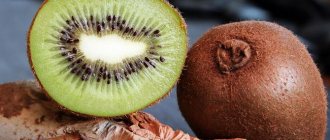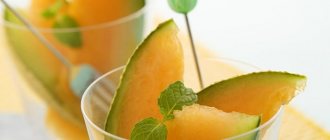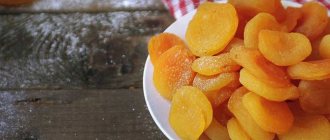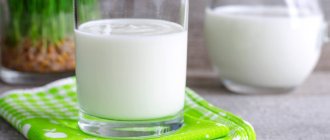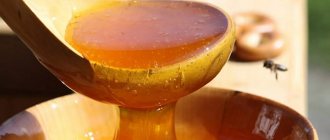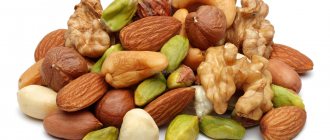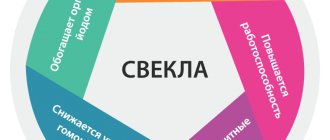Is it possible for a nursing mother to take a bath and how long after giving birth?
Opinions regarding when a nursing mother can take her first baths after childbirth vary from specialist to specialist. If the guardians of midwifery traditions recommend starting to take baths from the very first days after the birth of a child, then the point of view of doctors is more categorical: it is necessary to wait until the end of lochia - postpartum discharge. Let's figure out which of them is right and why.
The benefits of baths for the human body
The positive effects of a bath lie not only in cleansing the body of dirt, sweat and sebum. Warm water:
- opens pores, promoting the removal of toxins;
- moisturizes the skin;
- improves blood circulation;
- relieves mental and muscle tension;
- copes well with depression and neuroses, which often plague mothers after childbirth and can interfere with breastfeeding.
However, the decisive point here is the temperature of the water and the time spent in the bathroom.
Why is a bath contraindicated immediately after childbirth?
Modern gynecology considers taking baths undesirable in the first 40 days, explaining this by the fact that the birth canal narrows quite slowly after childbirth and at first is defenseless against the penetration of bacteria. The water in the pipes is far from sterile, and the microorganisms living in it can easily settle on the inner surface of the uterine cavity, which is still bleeding after the placenta has been separated. The second source of infection is the surface of human skin.
Mucus, wound secretions and blood are an excellent breeding ground for microbes. When active proliferation of bacteria begins, foci of inflammation appear. Another factor of harm is poisoning of the body with waste products of microbes. The immune system, being weakened after childbirth, is unable to cope with the abundance of aggressive microorganisms, which often ends in postpartum endometritis. Sutures placed after a cesarean section, episiotomy, or rupture often become inflamed.
The cervix completely restores its barrier function only one and a half to two months after birth.
Bath during breastfeeding
You should also not take baths when your nipples are damaged, which often occurs due to breastfeeding in inexperienced mothers. The reason for the ban is the same: potential breast infection.
Hot water is also undesirable for those mothers whose lactation has not yet stabilized, since vasodilation causes increased milk production. A newborn cannot handle such a volume of milk, so to avoid stagnation, the breasts have to be emptied. But the catch is that pumping again increases lactation.
If milk production is insufficient, the properties of hot water can only be beneficial. The good effect of warm breast baths is known, which, unlike a regular bath, are available from the very first days of breastfeeding.
How and when should a nursing mother take a bath?
In each specific case, the time of taking the first bath must be agreed with the gynecologist. The general rule is that baths can be taken 1.5-2 months after birth, i.e. when the release of lochia is completed (for natural childbirth, on average at 5 weeks, for caesarean section - at 8 weeks), and the cervix becomes inaccessible to water-dwelling bacteria.
The most suitable water temperature for rest and relaxation is considered to be 37 °C, which should be maintained throughout the bath. You can stay in the bath for no more than 20 minutes, otherwise the desired skin hydration will result in the opposite effect - dryness. It is advisable to lie in the bath so that the chest remains above the water.
If mom, on the contrary, needed to cheer up and get ready for active work, the optimal water temperature will be 12–30 °C. However, you can take a cool bath for no more than 10 minutes. Hypothermia can cause vasoconstriction, difficulty in releasing milk and, consequently, its stagnation - lactostasis. This in turn can lead to mastitis.
Medicinal herbs (for example, a bath with chamomile flowers) can be a good help for speedy healing of wounds.
Postpartum swaddling
Postpartum swaddling is a restorative procedure that is gaining popularity, when it is not the newborn who is swaddled, but the woman. The mother’s body sweats and warms up from the inside, which ensures:
- elimination of excessive elasticity of joints and ligaments (necessary during pregnancy and caused by the hormone relaxin);
- detoxification of the body;
- removal of tissue edema;
- restoration of proper bowel function (a common occurrence after childbirth is intestinal atony, which prevents normal bowel movements);
- increased capillary blood circulation;
- ventilation of the lungs;
- correcting the position of the pelvic joints;
- visceral abdominal massage (corrects the position of the uterus);
- prevention of lactostasis and mastitis;
- alignment of hormonal levels;
- relaxation and elimination of postpartum depression.
This technique, which can partially replace a hot bath, was developed based on the midwifery traditions of the past.
In the old days, the midwife washed the body of the woman in labor in a bathhouse, and then cleaned it with swaddling. If there is no bath, warming up is carried out in a regular bath, when at least 5 days have passed after birth.
As for the above-mentioned bacteria, according to the midwives, they are a natural part of the internal microflora of the body and are not capable of harming a healthy woman.
Baths have considerable benefits for the body of a nursing mother: they remove toxins, improve blood circulation, and relieve tension. However, due to the fact that the birth canal requires time to recover, in order to avoid infection, it is not recommended to bathe for the first 1.5-2 months after birth.
AmyMama.ru
Bathing while breastfeeding: all the pros and cons - doctor's opinion
Down with superstitions, unscientific advice, forum horror stories and great-grandmother's tales.
It’s not in vain that we live in the 21st century – a time of high enlightenment, technological advancement and evidence-based medicine. Let's approach the issue thoroughly.
So, why did our mothers, and the mothers of our mothers, categorically oppose swimming in open water during breastfeeding? Because it was possible to “get a chest cold.”
Well, first of all, there is no such thing. And there is no meaning in this phrase either. There is a scientific term “lactostasis” - stagnation of milk in the ducts of the mammary glands (symptoms: high fever, unbearable pain in the chest, tightness in the chest, mild constant pain). It has many causes, but none of them are associated with colds and colds.
There is also the term “lactation mastitis” - a disease of the mammary gland that occurs during lactation and is characterized by an inflammatory process (it makes itself felt by fever, severe general malaise, sharp and quite intense pain). Again, the factors that influence the development of the disease have nothing to do with “breast hypothermia.”
Let's return to our topic: is it possible for a nursing mother to swim in reservoirs? We will not take it on faith and ask Maxim Shcherbina , a surgeon, deputy chief physician for surgery at the Dobrobut Medical Center, a doctor who has devoted 16 years to the problems of breastfeeding, to clarify the situation.
Bathing while breastfeeding
Let's start with contraindications - there are two of them. The first and most important condition is the absence of violations of the integrity of the skin. In other words, you can swim if there are no cracks in the nipples through which infection can enter the body. In the end, our water bodies are not so clean now that we can trust them unconditionally.
Secondly, it is necessary to avoid sudden temperature changes. It is better to cross out cold rivers and lakes, as a sharp contrast can lead to spasms of the milk ducts. The recommended water temperature is not lower than 19°C and not higher than 25°C to avoid overheating.
As for time, you can go on vacation three months after the birth of the baby. Then postpartum discharge stops and all open wounds heal.
So you can and even need to swim to gain strength, get rid of stress and simply enjoy life.
General recommendations
Here are a few features of staying on the beach that will help make your vacation comfortable and safe:
Bathing. There are no restrictions on how long you can stay in the water. If mom is comfortable and receives positive emotions, splashing in the waves will only benefit her.
Shower. It’s good if the beach is landscaped and there is an opportunity to take a shower after swimming. There is no need to do any special procedures after bathing, since breast milk itself has antiseptic properties.
Sun. You should not completely avoid the sun - the sun's rays are needed to produce the much-needed vitamin D. Safe times for tanning are morning (before 11.00) and evening (after 16.00). The breasts must be covered with a bra - sunbathing with open nipples can lead to their hardening and various problems.
Baby. There are no contraindications against a mother swimming with her child. But on the beach it must always be kept in the shade so that it receives reflected ultraviolet rays.
Lactostasis and lactation mastitis – what to do?
Regarding lactation mastitis and lactostasis, which we mentioned at the beginning of the article, the main thing to remember is that if alarming symptoms occur, such as fever, severe chest pain, discomfort when feeding, headache and general weakness, you must immediately contact doctor.
Why is it important? Lactation mastitis occurs in 20% of women who are lactating. Only in 10% of cases the disease develops into an abscess form, which requires surgical treatment. Meanwhile, if you consult a specialist in the first 72 hours, then even with it in most cases it will be possible to do without surgery by using conservative treatment methods.
Advice from the doctor
If you have the slightest suspicion of a lactation disorder, be sure to consult a doctor. In MC “Dobrobut” there is a whole direction that deals with lactation issues. Our clinic has revolutionary approaches to the treatment of lactation mastitis - now even acute mastitis can be treated (or, in extreme cases, operated on) without interruption from feeding.
In general, a young mother needs support, and if lactation is disrupted, she should feel cared for by people close to her. She should rest, be limited from some household chores that exhaust her, and simply enjoy motherhood.
shutterstock
Source: https://4mama.ua/mom/health-food/8758-kupanie-pri-grudnom-vskarmlivanii-vse-za-i-protiv-mnenie-vracha
Is it possible to take a bath while breastfeeding?
Many women are interested in the question of whether a nursing mother can take a bath. Doctors recommend refraining from taking baths in the first weeks after childbirth and advise postponing the pleasant procedure for 30-60 days. Why a bath is harmful during breastfeeding and how to bathe a nursing mother properly at this time, we will look at in this article.
The effect of bath procedures on the body
Bath procedures have a positive effect on a person. They not only cleanse, but also saturate the skin with moisture, relax and soothe. Taking a bath helps fight stress, relieves tension and fatigue. This helps improve blood circulation and stabilize pressure, open pores and cleanse the body of toxins. When breastfeeding, a relaxing bath will help cope with postpartum depression and quickly restore strength and body.
The bath performs the following useful functions:
- Improves skin condition and nourishes the skin with moisture;
- Softens and moisturizes the skin;
- Opens pores and removes toxins from the body;
- Calms and improves sleep;
- Relaxes, relieves nervous and psychological tension, helps with stress and depression. What else will help a nursing mother with stress, read here;
- Helps with headaches and migraines;
- Relieves fatigue and muscle tension;
- Improves blood circulation and stabilizes blood pressure;
- Baths with special herbs have a positive effect on well-being and help with insomnia and respiratory diseases.
However, the decisive factor in the benefits of bathing procedures is the temperature of the water and the duration of bathing. The optimal temperature is 37 °C, and bathing time is no more than 20 minutes. Failure to follow these simple recommendations will reduce the beneficial effects of the procedures to zero. In addition, prolonged exposure to water leads to excessive dryness of the skin.
Harm to a bath for a nursing mother
The birth canal does not contract immediately after birth, which increases the risk of bacteria entering and causing infection. In addition, a woman’s immunity is too weakened after pregnancy and the birth of a baby, so the body will not be able to effectively resist dangerous substances.
The cervix closes and restores functions, including protective functions, only after one to two months. That is why gynecologists do not recommend using a bath earlier than after 40 days. If a nursing mother decides to take a bath before the uterus is restored and the birth canal heals, she may face a number of problems. This may be inflammation of the sutures, postpartum endometritis and various inflammations.
We also note that after giving birth, a woman is not recommended to go to the bathhouse in the first 1.5-2 months and if she has problems with lactation. How you can combine bath procedures and breastfeeding, read the link https://vskormi.ru/mama/banya-pri-grudnom-vskarmlivanii/.
How and when to take a bath during lactation
The first bath can be taken after the final completion of postpartum discharge. As a rule, with a natural birth this occurs in the fifth week after birth, with a caesarean section - in the eighth.
It is recommended to take a bath at a water temperature of 36.5-40 degrees. The optimal bathing time is 15-20 minutes. You should not be in a hot bath with a water temperature above 37 degrees if lactation has not yet established. You should also not bathe in a cold or tepid bath. Due to hypothermia, the blood vessels contract at this time, making it difficult for breast milk to flow out.
Before and after taking a bath, you should drink more clean drinking water to prevent dehydration. Due to lack of water in the body, milk production may deteriorate. You can also drink soothing herbal or green tea after the procedures. But keep in mind that not every collection is safe for breastfeeding and babies. You can buy a special herbal tea for nursing, which improves lactation. But even here you should carefully choose the product so that the baby does not develop an allergy.
It is useful to add herbal decoctions to the bath. Chamomile and calendula are suitable, as they have a relaxing and calming effect, heal wounds and relieve inflammation. Before each procedure, wash the bath thoroughly!
You should not take a bath if a nursing mother has cracks, abrasions and other damage to her nipples, as infection can get through open wounds. To get rid of cracks, use various special ointments and compresses. For more information on what to do in this case, read the article “Treatment and prevention of cracked nipples during breastfeeding.”
vskormi.ru
How to properly take a bath during lactation
The ideal water temperature when taking a bath during breastfeeding is considered to be 37 degrees. This temperature is the most comfortable, as it is equal to the temperature of the human body. The reception time should not exceed 15-20 minutes. But at the same time, it is worth making sure that the woman’s breasts are always above the water level.
But there are exceptions to this process. Bathing is contraindicated for women who have been diagnosed with hyperlactation. Hot water dilates blood vessels, which leads to even greater milk production. The baby is unable to drink large amounts of milk. Moreover, the process of feeding, and even expressing milk also leads to an increase in milk levels. The consequence of the above can be lactostasis, or even worse, mastitis. And here you can’t do without treatment.
And when a woman suffers from low milk production, taking hot baths, on the contrary, will have a positive effect on the woman’s health. Baths with cool water will allow you to tune in to an active time, as they will help you cheer up. But during lactation you should not sit in water for more than 8-10 minutes. After all, the blood vessels narrow greatly, which can also lead to difficulty removing milk from the body, and as a result, to lactostasis.
To prevent a woman from harming a woman by simply taking a hot or cool bath, she should be as attentive as possible to her own feelings and the recommendations of a specialist. Because failure to follow some, even minor, tips can ultimately lead to diseases that require serious treatment.
is it possible to get pregnant while breastfeeding
When can you start taking a bath after childbirth and rules for safe swimming for nursing mothers
Home › Appearance › When can you start taking a bath after childbirth and rules for safe swimming for nursing mothers
There are different points of view on when a woman who has given birth can take a bath. Doctors do not recommend bathing in the bathroom until the end of postpartum discharge - lochia. Supporters of all things natural and midwifery traditions argue that it is possible and even beneficial to take a bath almost immediately upon arriving home from the maternity hospital. How long after childbirth can you plunge into relaxing warm water?
The effect of a bath on the body
Where there is water, life flows. Bath procedures have a positive effect on the human body, clearing away dirt, saturating the skin with life-giving moisture and helping the nervous system in the fight against inevitable stress - calming, relaxing and relieving mental stress. A few minutes after taking a bath, muscles and ligaments relax. Blood circulation improves. The pores open and toxins are removed from the body. A bath after childbirth can be an excellent help for neuroses and depression, which so often happen with the birth of a child. But... the desired effect depends on the temperature of the water and how long you splash in the bath.
The optimal water temperature for relieving tension and relaxation is 37 °C. For maximum comfort and benefit from taking a bath, you should not allow the temperature of the water to drop, and add warm water as it cools. The bath time should not exceed 20 minutes. Otherwise, instead of the effect of moisturizing the skin, you can provoke excessive dryness. If your goal is not a sound, restful sleep, but active activity, then plunging into a bath with a water temperature of 12–30 °C invigorates and brings clarity of thought. But the time spent in such a bathroom is a maximum of 10 minutes to avoid hypothermia.
Why can't you take a bath after giving birth?
Gynecologists and obstetricians strongly do not recommend taking a bath earlier than 40 days after birth, no matter how much you want to take the long-awaited swim. This is due to the fact that the birth canal does not contract immediately after childbirth, and is essentially an open gateway to infection. The cervix closes and acquires its functions, one of which is barrier function, only 1.5–2 months after birth.
Freely penetrating with water, the bacteria come into contact with the inner surface of the uterine cavity, which is a large bleeding wound left after the placenta separates during childbirth. Tap water is far from a sterile substance, even chlorinated. Bacteria can also enter water from the surface of the skin, which is populated by millions of their varieties - both relatively harmless and downright aggressive.
When they enter a fertile nutrient medium - blood, wound secretions, mucous membranes, they actively begin to multiply and cause inflammatory processes and intoxication of the body with the products of their activity. The immune system, weakened by pregnancy and not able to recover after childbirth, is unable to prevent this “bacterial feast.” The result is, at a minimum, postpartum endometritis and inflammation of the sutures placed during ruptures, incisions and cesarean section. In severe cases, hospitalization is required, which negatively affects the separated nursing mother and infant.
It is also not entirely advisable to take a bath a few days after giving birth for hygienic reasons. In the first week, many women still have quite abundant discharge from the genital tract, and swimming in clots of blood and mucus is a dubious pleasure, after which it is necessary to take a shower to maintain cleanliness.
How and when can a nursing mother bathe?
It is not recommended for a nursing mother to bathe in the bath when there are damaged nipples for the same reason - possible infection of the breast through open wounds and cracks. You can take a bath while breastfeeding the same amount of time as all mothers who have given birth - after the end of postpartum discharge. If lactation has not yet established, then you should not sit in hot water. High-temperature water dilates the blood vessels of the breast, thereby increasing the flow of milk into the mammary glands, the volume of which has not yet adjusted to the baby’s needs. To prevent stagnation, it is necessary to empty the chest.
The baby is not yet able to cope with such an influx, and pumping stimulates even greater milk production.
Also, you should not take a bath in cool and cold water. In this case, the vessels, on the contrary, contract and the outflow of milk becomes difficult. A blockage can form in the milk ducts - lactostasis, and subsequently inflammation of the mammary gland - mastitis.
Is it possible to take a bath?
Today, such assistance in recovery after childbirth as postpartum swaddling is practiced. But it is not the child who is swaddled, but his mother. The essence of the method is that after childbirth, a woman is “warmed up” from the inside and outside, thus relaxing the body and removing with sweat the hormone relaxin that has accumulated during pregnancy, relaxing the muscles and ligaments. After this “sweating”, the position of the internal organs and bones is corrected using massage and tightening with fabric.
The technique is based on the traditions of the forgotten art of midwifery, when the midwife, having delivered the baby, spent some time with the woman in labor, helping her recover. A woman who gave birth was given three baths, where the “umbilical woman” washed and cleaned her body, wrapping her in diapers. In the absence of a bathhouse in urban conditions, warming up is carried out in a bathtub, usually 5 days after birth. But what about the microbes that penetrate the uterine cavity with water?
To this question, modern midwives answer that bacteria are a normal component of our life and our own microflora, and for the development of inflammation, water alone is not enough; some other predisposing factors must work.
From this point of view, you can bathe in the bathtub after childbirth by relying on your body’s defenses, which can resist pathogenic microorganisms.
Whether to take a bath after childbirth or not is a controversial question, and the doctors’ answer is advisory in nature. The choice to take a bath or refuse it is a woman’s personal choice, but the risk of undesirable consequences from bathing after childbirth still exists, and it should not be completely written off.
(2 votes, result: 4.00 out of 5)
yaposlerodov.ru
Contraindications for visiting the bathhouse
Contraindications to visiting for a nursing woman are only general. The bathhouse is compatible with lactation, and breastfeeding has never been a reason for a ban. Thousands of women visit baths and saunas if their cardiovascular system and blood pressure are functioning normally, there is no bronchial asthma, and breastfeeding is not an obstacle if the fluid lost during sweating is replenished in time.
It is better to start visiting in the summer, after staying in the steam room. A bathhouse while breastfeeding can affect your health when temperature changes occur from a steamy, cold outdoor atmosphere or frosty air.
Is it possible for a nursing mother to take a bath?
No matter how many children are born around, no matter how many books are written about it, most young mothers forget about everything they read and hear, being left alone with their own child. Nursing mothers often ask whether it is possible to go to the bathhouse during lactation. Are they worried about how this will affect the quality of the milk and whether it will “burn out” from the high temperature?
Carefully monitor your well-being and do not get carried away with long “marathons” in the steam room. Until doctors decide on this issue, it is wise to avoid visiting the steam room in the first weeks after the birth of the child, until the young mother stops having postpartum discharge (this is about 6 weeks).
All the cases known to me of a temporary decrease in the amount of milk after a bath or sauna were associated with the fact that the woman drank less than she needed or stayed in the steam room for too long. In such a situation, it is advisable to drink clean warm water or herbal tea, but it is important that it does not contain mint and sage.
When the baby does not attach to the breast for a long time and it remains full, that day or the next, less milk may come in than usual. As a rule, a day spent with the child with unlimited access to the breast completely restores lactation.
What a nursing mother can do or Feeding is not a disease, but a natural state of the female body
But due to the high temperature, the blood vessels of a young mother can expand more than they did before pregnancy, since the hormonal background of a nursing woman changes greatly. Among my friends, there are many women who at 40 look better than they looked at 30, and there are also those who at 18 look 35. Have you changed much over the past 10 years and in what direction?
My husband and I live in an apartment with my mother. My mother is single. And the baby with the milk will then receive everything that was in this liquid. Yes, you can. At minus 200, it can be stored in the freezer for up to six months. Then it is simply defrosted and given to the child.
If mom has a headache, toothache, etc., a single dose of medication in these situations is not contraindicated. There are breasts that “give” milk very easily, and there are no problems with them. 5. Is it really important to use a special powder when washing children's clothes or not, is there a difference between hand washing or machine washing?
Then you can take baths with special additives depending on the condition of the baby’s skin. Depending on the state of the child’s nervous system, the doctor may prescribe medicinal baths with pine needle extracts, sea salt, and sedative herbs. There are certain standards regarding which specialists and within what time frame parents must show their child. The reason for this may be the narrowness of the child’s nasal passages, and the mother thinks that he has difficulty breathing.
In accordance with the decision of the State Pharmacological Committee, the use of aspirin in children under 15 years of age is contraindicated for ARVI, influenza, and chickenpox. As a rule, the temperature in this case is not very high. During the first year of life (again, we are talking about a practically healthy child), it is good to take 2-3 courses with an interval of three months.
Breastfeeding is a natural process for the female body, so a nursing mother can do almost everything that any healthy woman can. Most substances circulate from the blood to the milk and back again until they are eliminated from the body.
Last news:
But it’s better to paint and curl in a well-ventilated area. Solarium. Tanning in a solarium does not affect breast milk in any way. When ingesting any tanning products, you should consult a specialist about their compatibility with breastfeeding.
Light exercise will not harm breastfeeding, but excessive exercise can reduce your milk supply. Public pool, river, lake. A nursing mother can swim in a public pool, in a river, or in a lake, but provided that she does not have cracks or other damage to her nipples.
But if you visited a bathhouse or sauna during pregnancy and this is habitual for you, then 6 weeks after giving birth you can safely continue visiting. Compatibility of medications with breastfeeding.
Keep in mind that the younger and lighter your baby is, the harder it will be for his body to eliminate the medicine. Dental treatment. Dental treatment is possible while breastfeeding, but the woman must inform the doctor that she is breastfeeding. Modern anesthetics used in dentistry - lidocaine and ultracaine - are compatible with feeding.
Experts do not prohibit visiting bathhouses and saunas; you just need to take certain precautions. For a nursing mother, rapid loss of fluid from the body can have the most unpleasant consequences. In large quantities, this drink can temporarily reduce your milk supply. Separation from the child can lead to a reduction in its production.
10. Are swimming pools and massages recommended for all children? 6. How long after birth should I bathe my baby every day and in what cases should I add something to the bath? While the child is small (baby), he can swim in the bath, but when he grows up, he will, of course, be more comfortable in the pool. Safety rules It is best if the mother is not separated from the child for a long time. As for treatment, in a large number of cases it can be treated without stopping breastfeeding.
natootawaner.ru
Is it possible for a nursing mother to swim in the sea, river or pool?
Every new mother strives to create ideal conditions for the growth and development of her newborn baby.
An important aspect in this case is breastfeeding. This process is important not only for the baby, but also for the mother. In the process, many questions arise that are not so easy to answer.
Many women are interested in whether a nursing mother can bathe? Subject to certain rules, this is not prohibited.
Precautionary measures
So, is it possible for a nursing mother to swim in a river, lake or sea? Yes, it's allowed. However, the water in the reservoir must be clean. It is desirable that the bottom of the river or sea be visible and sandy.
You should not swim in bodies of water where garbage floats on the waves. The water may be contaminated.
In addition, you should avoid swimming if your nipples are damaged or cracked. When tissues are damaged, pathogenic bacteria and dirt in the water can enter the wounds and cause inflammation.
You should avoid swimming in salt water if you have damaged nipples. The water procedure can only cause a feeling of discomfort.
Don't forget about personal hygiene. After water procedures, take off your wet swimsuit, and then rinse your chest with clean water. Only after this is it allowed to feed the baby.
Temperature indicators
During the feeding period, the female breast is the weakest point of the entire body. It must be protected not only from shock and damage, but also from hypothermia. Is it possible for a nursing mother to swim in a lake at low temperatures in a river or sea?
It’s better not to take risks and take care of your health.
During the feeding period, it is recommended to swim in water whose temperature is not lower than 19°C. There is not only a lower limit, but also an upper limit. A nursing mother should not swim in water whose temperature is above 25°C.
Why? In such water, pathogenic microorganisms actively multiply and are able to penetrate the weakened mother’s body.
Minor rules
Is it possible for a nursing mother to swim and sunbathe in the river? The points listed above only cover the basic requirements. However, a nursing woman should pay attention to minor rules:
- After swimming in a river or sea, you need to wipe your chest dry and take off your wet clothes.
- It is forbidden to stay in the water for a long time. You can swim in a river or in the sea for no longer than 15-20 minutes, then you need to take a break and warm up.
- Experts do not recommend diving for nursing mothers, as river or sea water can enter the nasopharynx.
- If a lot of milk has accumulated in the breast, then the baby should be attached to it. Before feeding, the young mother should take a shower. If this is not possible, then you should carefully wash your breasts with clean water. Read more about whether you should wash your breasts before each feeding?>>>
- Women can swim in a river or sea 2-3 months after giving birth. By this point, postpartum discharge has stopped and almost all open wounds have healed.
See also my video tutorial about swimming and tanning while breastfeeding:
Is it possible to use the pool
Can a nursing mother swim in the pool?
Yes.
However, there are certain rules here too.
- A nursing mother can start visiting the pool three months after the birth of her baby. If postpartum discharge has not yet stopped, then water procedures should be abandoned.
- Before leaving home, it is better to feed your baby, or empty your breasts by expressing milk into a clean and sterilized container. After all, the child may get hungry during her absence.
- After swimming, experts recommend taking a shower. This will wash off the disinfectants that are added to the pool water from the surface of the skin.
Is it worth taking a child with you?
Now you know whether a nursing mother can swim in the sea or in the river. However, many may have a question: is it possible to take a baby with you?
You can visit open bodies of water, such as a river or the sea, with your child. But decide for yourself whether a baby should swim in them. Often the water is not very clean and warm, and many mothers are simply disdainful of bathing their children in it.
Some features
Is it possible to swim with your baby while breastfeeding?
Of course it is possible.
It is important that the child is with his mother and feels supported in the water. There is no need to dive or teach your baby to swim in large bodies of water or the sea.
Experienced swimming instructors will never take a child under 3 years old for swimming lessons, explaining this by the fact that the child’s body proportions have not yet leveled out. The head is often heavier and larger, making it difficult for the child to float on the water.
In conclusion
Swimming in the lake or sea during the feeding period is not prohibited. However, a woman during lactation must take care of her health. Following simple rules will help you avoid many troubles.
Swimming in the river or in the sea should only be done in warm and sunny weather. If the water is too cold, then you should avoid water procedures.
Source: https://uroki4mam.ru/mozhno-li-kupatsya-kormyashhej-mame
When can you take a bath after childbirth?
Every woman who recently became a mother feels “broken” and wants to relax in one way or another. In particular, some girls dream of simply lying in a warm bath, thereby providing their body with complete, albeit short-term, rest.
Unfortunately, doctors prohibit carrying out such a hygienic procedure immediately after the baby is born, and they have really good reasons for this. In this article, we'll tell you when you can take a bath after giving birth, and why doing it too soon can be dangerous.
Why can't you take a bath immediately after giving birth?
After the birth process, a woman’s body needs some time to fully recover. In particular, the birth canal does not contract immediately, as a result of which the cervix remains slightly open for quite a long time. It is for this reason that within a few weeks after the baby is born, the likelihood of an infection entering the body of a young mother is unusually high.
When taking a bath with tap water, which is not a sterile substance at all, a huge number of different bacteria come into contact with the bleeding surface of the uterine cavity, almost instantly penetrating into a favorable environment for their reproduction. All this contributes to the development of inflammatory processes, which the young mother’s body will not be able to cope with due to weakened immunity.
As a rule, such inflammation affects fresh sutures placed during a cesarean section or as a result of incisions and ruptures that occurred during natural childbirth. If the lining of the uterus itself becomes inflamed, pathogens will soon begin to infect the muscle layer, thereby contributing to the development of endometritis.
When can you lie in the bath after childbirth?
As a general rule, you can take a bath after the birth of your baby only after the postpartum discharge has ended. On average, for most women this happens 40-45 days after achieving the happiness of motherhood. In any case, before carrying out such a hygienic procedure, it is recommended to consult a doctor who will conduct the necessary examination and give appropriate recommendations.
In addition, it should be taken into account that the temperature of the water in the bath for the first time should not exceed 40 degrees, and the duration of the session should be no more than 30 minutes.
When can you take a hot bath after giving birth?
The time when it will be possible to increase the water temperature depends on whether the young mother continues to breastfeed her baby. If the baby is bottle-fed, you can gradually make the water hotter immediately after the end of postpartum discharge.
In turn, a nursing mother after childbirth can take a hot bath only when lactation has already been established. Until this time, too high a temperature can provoke the development of stagnation or such a dangerous disease as mastitis.
Related articles:
| How long does it take for the belly to go away after childbirth? A question that worries most mothers who have recently undergone childbirth. After all, the belly will go away gradually while the uterus returns to its normal size. However, other factors also influence the process of belly reduction. | Anal sex after childbirth Knowing that sexual intercourse is prohibited after the birth of a child, spouses often look for alternative options for lovemaking. In particular, the question often arises whether it is possible to have anal sex. Let's discuss this point in more detail. |
| Lower back pain after childbirth As a rule, the postpartum period is associated with the depressed state of health of the mother, who has not had time to recover after a long period of pregnancy, and her body will continue to rebuild for a long time to improve its functioning. Thus, women often complain of lumbar pain. | Constipation after childbirth - what to do? Problems with bowel movements occur in most women in labor. However, today medicine can offer a number of tools that make the task easier for mothers who have recently given the world a new life. |
WomanAdvice.ru

